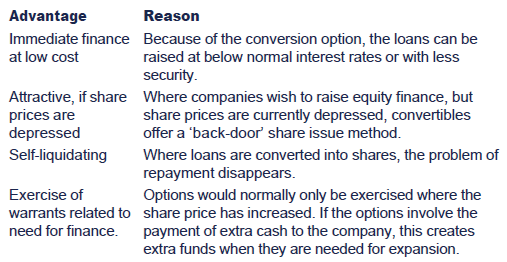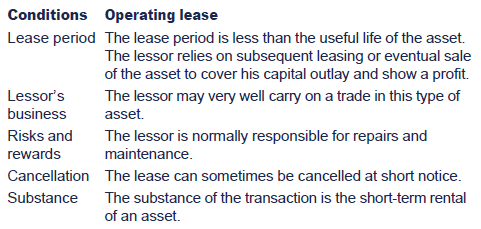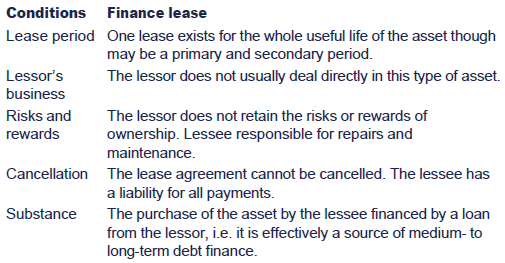Debt Finance
Debt is the main alternative to equity within the wider context of corporate finance and can be used for both short and long term purposes.
Debt usually involves the payment of interest and may or may not be secured.
This page looks at the characteristics of different types of debt finance. Further detail on the legal aspects can be found here.
Characteristics of debt finance
From the viewpoint of the investor
Debt is usually viewed as low risk because:
- it often has a definite maturity and the holder has priority in interest payments and on liquidation
- income is fixed, so the holder receives the same interest whatever the earnings of the company.
Debt holders do not usually have voting rights. Only if interest is not paid will holders take control of the company.
From the viewpoint of the company
Advantages of debt
- Debt is cheap. Because it is less risky than equity for an investor, loan note holders will accept a lower rate of return than shareholders. Also, debt interest is an allowable expense for tax. So if the cost of borrowing for a company is 6%, say, and the rate of corporation tax is 30%, the company can set the cost of the interest against tax, and the effective 'after-tax' cost of the debt would be just 4.2% (6% × 70%).
- Cost is limited to the stipulated interest payment.
- There is no dilution of control when debt is issued.
Disadvantages of debt
- Interest must be paid whatever the earnings of the company, unlike dividends which can be paid in good years and not in bad. If interest is not paid, the trustees for the loan note holders can call in the receiver.
- Shareholders may be concerned that a geared company cannot pay all its interest and still pay a dividend and will raise the rate of return that they require from the company to compensate for this increase in risk. This may effectively put a limit on the amount of debt that can be raised.
- With fixed maturity dates, provision must be made for the repayment of debt.
- Long-term debt, with its commitment to fixed interest payments, may prove a burden especially if the general level of interest rates falls.
- Variable rate debt is exposed to interest rate rises.
Bank loans and overdrafts
Most companies have some form of bank finance and for SMEs this can be the main source of funds.
Bank overdrafts are normally unsecured and have no definite repayment schedule. As a result they are seen as highly risky by the lending bank who thus charges a very high rate of interest to compensate. Despite this many firms have an overdraft facility to cope with short term cash flow fluctuations.
Bank loans are normally linked to specific projects or assets, are often secured over assets of the company and have a repayment schedule. As such they are less risky than overdrafts and hence have lower interest rates.
Bonds and loan notes
Long-term debt (bonds), usually in the form of debentures or loan notes, is frequently used as a source of long-term finance as an alternative to equity.
Characteristics
A bond is a written acknowledgement of a debt by a company, normally containing provisions as to payment of interest and the terms of repayment of principal.
Bonds are also known as debentures, loan notes or loan stock. They:
- may be redeemable or irredeemable.
Irredeemable debt is not repayable at any specified time in the future. Instead, interest is payable in perpetuity. As well as some bonds, preference shares are often irredeemable.
If the debt is redeemable the principal will be repayable at a future date.
Different types of bonds
There are many different types of bonds available. However, a couple of common types that you should be aware of are:
Deep discount bonds
These are loans notes issued at a price that is a large discount to the nominal value of the notes, and which will be redeemable at par (or above par) when they eventually mature.
The low initial price paid by the investor is balanced against a lower rate of return (coupon rate) offered on the bond. Much of the return gained by the investor comes from the capital gain when the bond is redeemed.
Zero coupon bonds
These are bonds that are issued at a discount to their redemption value but no interest is paid on them.
Hybrids and convertibles
Convertibles
Some types of finance have elements of both debt and equity, e.g.:
Convertibles give the holder the right to convert to other securities, normally ordinary shares at either a:
- predetermined price
- e.g. notes may be converted into shares at a value of 400c per share
- predetermined ratio
- e.g. $100 of stock may be converted into 25 ordinary shares.
Conversion premium occurs if:
Market value convertible stock > Market price of shares the stock is to be converted into.
Stock trading at $102, to be converted into 10 shares currently trading at $9 each, has a conversion premium of:
102 - (10 × 9) = $12 or $1.20 per share.
The floor value of a convertible loan note is the minimum market price of the note. Since it attaches no value to the conversion it can be calculated as the present value of the future interest payments plus the present value of the cash redemption value (i.e. the value a straight debenture would have with no conversion rights).
Loan notes with warrants
Warrants give the holder the right to subscribe at a fixed future date for a certain number of ordinary shares at a predetermined price.
NB If warrants are issued with loan notes, the loan notes are not converted into equity. Instead bond holders:
- make a cash payment for the shares
- retain the loan notes until redemption.
Often used as sweeteners on debt issues:
- interest rate on the loan is low and loan may be unsecured
- right to buy equity set at an attractive price.
- bond holders can sell the warrants after buying the loan notes, thereby decreasing the cost of buying the loan notes
Attractions of convertibles and warrants

Leasing
Leasing is an important source of debt finance, particularly for smaller businesses.
Growing in popularity as a source of finance, a lease is:
- a contract between a lessor and a lessee for the hire of a particular asset
- lessor retains ownership of the asset
- lessor conveys the right to the use of the asset to the lessee for an agreed period
- in return lessor receives specified rentals.
Leasing is a means of financing the use of capital equipment, the underlying principle being that use is more important than ownership. It is a medium-term financial arrangement, usually from one to ten years.
There are two main types of lease agreement:
- operating leases - short-term
- finance leases - long-term.
Operating leases

Finance leases

Usually the lease period is divided into two:
The length of the primary period will vary from asset to asset depending on the total expected economic life.
The decision whether to lease or buy is both a practical and financial one. The financial choice is covered here.
Sale and leaseback
A company that owns its own premises can obtain finance by selling the property for cash and renting it back off the acquirer, which would typically be an insurance company or a pension fund.
Although this can provide an immediate source of cash, often more than could be obtained from a mortgage, there are a number of disadvantages including:
- The company loses ownership of the property and will therefore miss out on any appreciation in the property's future value.
- The company will have to sign a rental agreement, usually for at least 50 years, thereby committing the company to occupying the property for many years ahead. This can be restricting.
- The future borrowing capacity of the company will reduce as property is a common asset used to provide security for debt finance.
- Any rent will be subject to regular reviews and will most likely increase over time.
|
Created at 8/21/2012 5:09 PM by System Account
(GMT) Greenwich Mean Time : Dublin, Edinburgh, Lisbon, London
|
Last modified at 4/25/2013 2:57 PM by System Account
(GMT) Greenwich Mean Time : Dublin, Edinburgh, Lisbon, London
|
|
|
|
 |
Rating
:
|
 Ratings & Comments
(Click the stars to rate the page) Ratings & Comments
(Click the stars to rate the page)
|
 |
Tags:
|
|
|
|
|